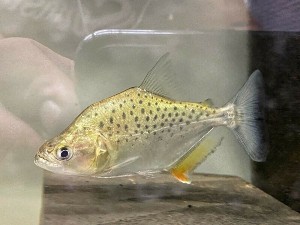
Piranhas Unveiled: Are They Truly Cannibals?
 "Piranhas, with their reputation for razor-sharp teeth and ferocious demeanor, have long been cast as nature's relentless cannibals. Tales of feeding frenzies and relentless attacks on their own kind have perpetuated the image of piranhas as voracious, flesh-hungry predators. In this article, we embark on an exploration of piranhas and their alleged cannibalistic tendencies. Are these fearsome fish truly the ruthless cannibals they're made out to be, or does their reputation outstrip reality? Let's dive deep into the fascinating world of piranhas to uncover the truth behind the myths and separate fact from fiction."
"Piranhas, with their reputation for razor-sharp teeth and ferocious demeanor, have long been cast as nature's relentless cannibals. Tales of feeding frenzies and relentless attacks on their own kind have perpetuated the image of piranhas as voracious, flesh-hungry predators. In this article, we embark on an exploration of piranhas and their alleged cannibalistic tendencies. Are these fearsome fish truly the ruthless cannibals they're made out to be, or does their reputation outstrip reality? Let's dive deep into the fascinating world of piranhas to uncover the truth behind the myths and separate fact from fiction."Unraveling the Myth
Piranhas, those razor-toothed denizens of South American waters, have long been depicted as ruthless, bloodthirsty cannibals in movies and folklore. But is this portrayal accurate, or is it yet another case of nature's creatures suffering from sensationalized misrepresentation? Let's embark on a journey to unravel the truth behind the piranha's alleged cannibalistic tendencies.
Feeding Frenzies: Fact or Fiction?
One of the most enduring myths surrounding piranhas is the idea that they engage in feeding frenzies, consuming their own kind when food is scarce. While piranhas are indeed opportunistic carnivores, the concept of frenzied cannibalism is not entirely accurate. Research has shown that piranhas primarily feed on live prey such as fish, insects, and carrion. However, in certain situations, particularly when kept in captivity with limited food sources, aggression among piranhas can lead to cannibalistic behavior.
Group Dynamics and Survival
Piranhas are social creatures that often travel in groups, known as shoals or schools, for protection and cooperative hunting. Within these groups, hierarchies form, and the largest and most dominant individuals tend to get the first pick of prey. Cannibalism, in this context, can be seen as a mechanism for maintaining group cohesion and ensuring the survival of the strongest individuals. It's a form of natural selection where the fittest members of the group are more likely to pass on their genes.
Feeding Habits in the Wild
In their natural habitat, piranhas have a diverse diet that consists of various aquatic creatures. They are not solely fixated on consuming their own kind. Instead, they rely on their acute senses to detect vibrations and disturbances in the water, allowing them to locate potential prey. Fish, insects, and even the occasional small mammal or bird can all become part of a piranha's meal. Cannibalism is just one facet of their feeding behavior and usually occurs under specific circumstances.
In Captivity: A Different Story
It's important to note that the image of ferocious cannibalistic piranhas is often associated with their behavior in captivity. When kept in overcrowded conditions with limited food resources, stress and aggression can escalate, leading to cannibalism. To better understand piranha behavior, it's crucial to study them in their natural environments rather than in artificial settings that may trigger atypical responses.
The Verdict: Opportunistic Predators, Not Exclusive Cannibals
In conclusion, piranhas are opportunistic predators with a varied diet that includes fish, insects, and carrion. While they can exhibit cannibalistic behavior, particularly in captivity or under specific environmental stressors, it is not their primary mode of feeding. So, the next time you encounter these fascinating creatures, remember that they are complex animals with a range of feeding habits, and their reputation as ruthless cannibals may not hold up to closer scrutiny.